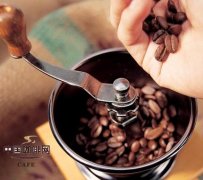Basic knowledge of fancy coffee how to make coffee essence

Coffee beans are the seeds in the coffee fruit, which are exposed to strong sunlight and are not removed until the shell is cracked. This method is called "non-washing" or "natural drying". Another way is to put the coffee fruit in the sink to flash, soak in water to soften and then remove the "washing" of the flesh.
The washing type refining process is that the harvested coffee fruit is put into the sink and soaked in 24 murmurs for 48 hours. In this way, only the ripe fruit will sink, and the immature fruit will float on the water, so that the ripe fruit can be selected. Then put it into the pulp removal machine, remove the skin and pulp, leaving only the seeds, and then put the seeds in the fermentation tank for half a day to a day, so that the pulp residue on the seeds will fall as a result of fermentation. Finally, rinse with water, dry in the sun, and remove the seed coat with a sheller.
Producing countries such as Central and South America handle this process in farms with rich water resources and excellent equipment. As a result of soaking in the tank in the process of fermentation, can not avoid the production of sour taste, sometimes mixed with other odors. However, this method has less sundries, and can pick out immature coffee beans, so the appearance and quality are better.
Non-washing type, also known as natural drying, is to spread the coffee fruit in the sun, after full drying, into the sheller to remove the pulp and silver skin, in order to obtain coffee beans. The non-washing operation procedure is relatively simple, as long as the program management is perfect, mature and high-quality coffee beans can be obtained, but this way is easily affected by climate. And the proportion of incomplete beans is very high. In addition, coffee beans treated in this way often have an earthy taste and are not suitable for long-term preservation. The vast majority of coffee beans produced in Ethiopia, Yemen and Brazil, as well as most Robasta coffee beans, are refined in this way.
Important Notice :
前街咖啡 FrontStreet Coffee has moved to new addredd:
FrontStreet Coffee Address: 315,Donghua East Road,GuangZhou
Tel:020 38364473
- Prev

Basic knowledge of Fine Coffee the production process of coffee beans
A coffee tree can harvest 3-5 kg of fruit, and raw coffee beans account for 1. 5% of the fruit quality. Going from fruit to raw coffee beans is really a time-consuming and laborious task. Arabian, Robusta and Librian Arabian coffee account for about 2% of the world's coffee production. The plant is not suitable for high temperature, low temperature, more rain and less rain. Coffee beans are oval flat and have a high height.
- Next

The advantages and disadvantages of drinking coffee is a wonderful way to drink coffee!
There are many benefits of drinking coffee, in addition to refreshing and more effective in weight loss, many medical reports have confirmed that coffee has a certain effect on weight loss, and it is necessary to study carefully to lose weight through coffee. only in this way can we get the double harvest of delicacy and health without affecting our health. First, caffeine three major weight loss principles 1, can promote the decomposition of hidden fat coffee in the coffee
Related
- Beginners will see the "Coffee pull flower" guide!
- What is the difference between ice blog purified milk and ordinary milk coffee?
- Why is the Philippines the largest producer of crops in Liberia?
- For coffee extraction, should the fine powder be retained?
- How does extracted espresso fill pressed powder? How much strength does it take to press the powder?
- How to make jasmine cold extract coffee? Is the jasmine + latte good?
- Will this little toy really make the coffee taste better? How does Lily Drip affect coffee extraction?
- Will the action of slapping the filter cup also affect coffee extraction?
- What's the difference between powder-to-water ratio and powder-to-liquid ratio?
- What is the Ethiopian local species? What does it have to do with Heirloom native species?

